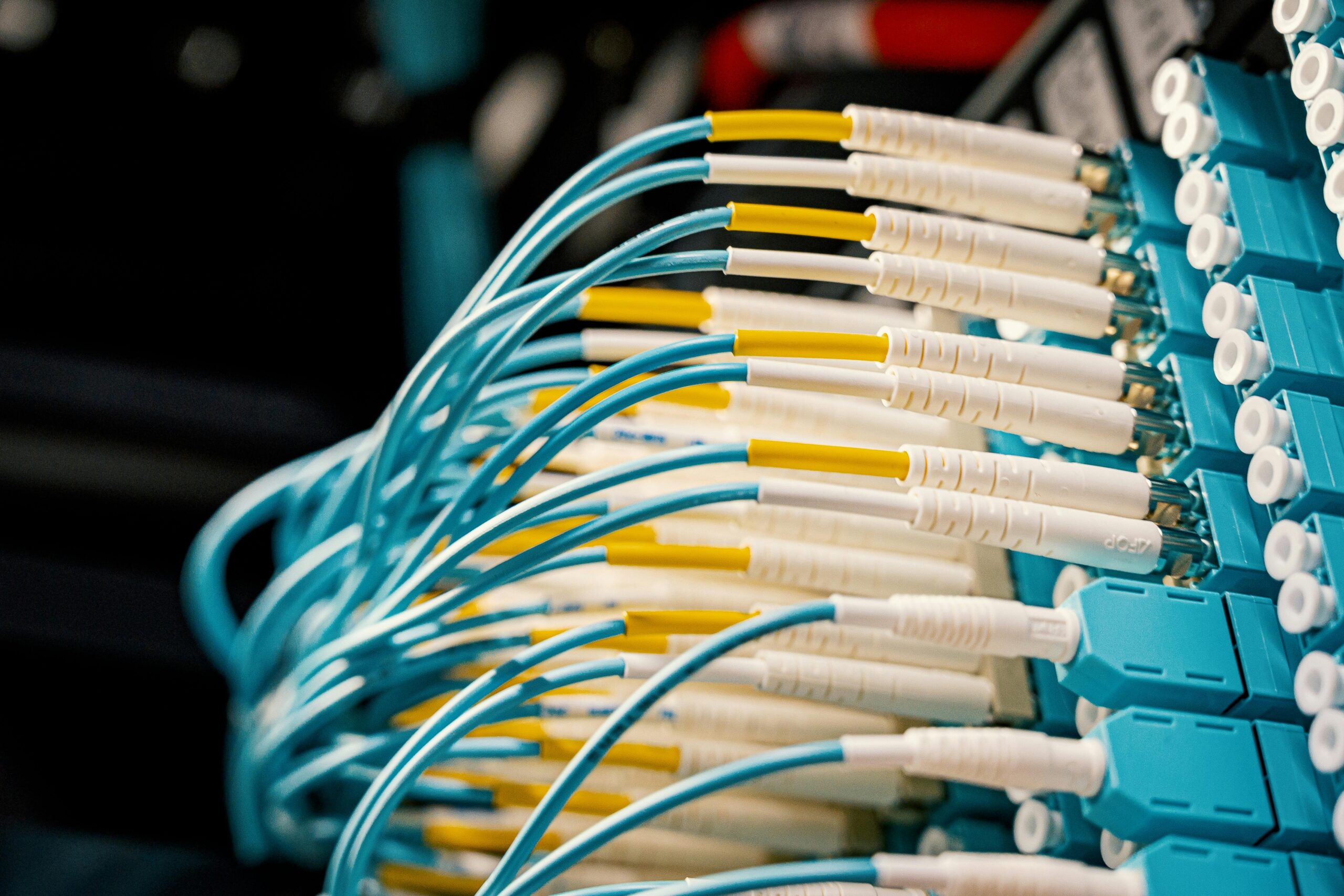Optical fiber technology has long been the backbone of our global communications infrastructure. From its early adoption in long-haul telecommunications to its current role in powering hyper-scale data centers, optical fiber has continually evolved to meet the growing demands of the digital age. Today, we stand on the brink of yet another revolution—driven by advances in multi-core fiber, photonic integration, and quantum communication—that promises to redefine how data is transmitted, processed, and consumed.
1. The Evolution of Optical Fiber: A Brief Recap
Optical fiber’s journey began in the 1970s, when researchers discovered that glass fibers could carry data as pulses of light. Early fibers were limited by high signal loss and dispersion, but breakthroughs in materials science and manufacturing during the 1980s led to the development of low-loss fibers capable of long-distance communication [1]. Over time, innovations such as Dense Wavelength Division Multiplexing (DWDM) pushed the boundaries further, enabling a single fiber to transmit data at terabit-per-second rates by carrying multiple wavelengths simultaneously [2].
2. The Current Landscape: Powering the Digital World
Today’s optical fibers underpin the high-speed, high-capacity networks that support everything from cloud computing to 5G/6G mobile networks. Modern data centers and telecommunications networks rely on advanced single-core fibers and dense cabling solutions to deliver ultra-low latency and massive bandwidth. Some key statistics include:
- Speed and Capacity:
- Modern fibers can support 10–100 Gbps per channel, with DWDM enabling aggregate capacities in the terabits per second (Tbps) range per fiber [3].
- Latency:
- With light traveling at roughly 200,000 kilometers per second in fiber, latency can be as low as 5 microseconds per kilometer, crucial for real-time applications [4].
- Energy Efficiency:
- Optical fiber networks typically consume 30–40% less power compared to their copper counterparts, contributing to lower operational costs and reduced environmental impact [5].
3. The Next Frontier: Emerging Technologies in Optical Fiber
As data demands surge and new applications emerge, optical fiber technology is poised for another transformative leap. Several innovations are driving this revolution:
a. Multi-Core Fiber (MCF)
- What It Is:
Multi-core fiber integrates several independent cores into a single cladding. Early prototypes include fibers with 7, 12, and even 19 cores, each capable of transmitting data simultaneously [6]. - Revolutionary Impact:
By consolidating multiple fibers into one cable, MCF dramatically increases data throughput and reduces physical cabling costs. Combined with DWDM, multi-core fibers could achieve aggregate capacities that far surpass current single-core systems [7].
b. Photonic Integrated Circuits (PICs)
- What They Are:
PICs combine multiple optical functions onto a single chip, much like electronic integrated circuits but for light. These devices promise to streamline optical signal processing, reduce power consumption, and enable more compact and efficient network hardware [8]. - Industry Outlook:
Advances in PICs are expected to facilitate faster data routing within data centers and enhance the performance of optical transceivers, driving down costs and boosting overall network efficiency.
c. Quantum Communication over Fiber
- What It Is:
Quantum communication leverages the principles of quantum mechanics—such as entanglement and superposition—to enable ultra-secure data transmission. While still in its infancy, integrating quantum channels with optical fiber networks could lead to virtually unbreakable encryption methods [9]. - Future Prospects:
Research in quantum key distribution (QKD) is rapidly progressing, with several pilot projects demonstrating secure data links over hundreds of kilometers of optical fiber.
4. The Potential Impact on the Optical Networking Industry
The convergence of these emerging technologies with traditional optical fiber is set to transform the networking landscape:
- Exponential Capacity Increases:
Innovations like MCF and advanced DWDM can multiply the data capacity of existing fibers, enabling networks to handle unprecedented volumes of data without the need for new physical routes. - Enhanced Efficiency and Reduced Costs:
With reduced power consumption and lower cabling requirements, next-generation optical fibers can drive significant cost savings. This will be crucial for hyper-scale data centers and urban networks where space and energy are at a premium. - Future-Proof Networks:
As global data traffic is projected to grow at a compound annual growth rate (CAGR) of over 25%, these innovations ensure that optical fiber networks remain scalable and resilient, ready to support next-generation applications like IoT, AI, and immersive virtual reality [10].
5. Conclusion: A New Era for Optical Fiber
Optical fiber technology is at the verge of yet another revolution. With multi-core fibers, photonic integration, and quantum communication leading the charge, the optical networking industry is set to achieve unprecedented levels of speed, capacity, and security. This next wave of innovation will not only meet the surging demands of our digital society but will also lay the foundation for a more connected, efficient, and secure future.
References
- Richardson, D. J., Fini, J. M., & Nelson, L. E. (2013). Space-division multiplexing in optical fibres. Nature Photonics, 7(5), 354–362.
- Winzer, P. J. (2018). Scaling optical access networks: DWDM and beyond. IEEE Communications Magazine, 56(4), 20–27.
- Sillard, P., et al. (2021). High-capacity transmission using multi-core fiber with DWDM. IEEE Photonics Journal, 13(5), 1–9.
- Ho, K.-P., et al. (2019). Crosstalk suppression in multi-core fiber systems. Optics Express, 27(10), 14490–14500.
- Li, X., & He, J. (2020). Economic analysis of multi-core fiber deployment in metropolitan networks. IEEE/OSA Journal of Optical Communications and Networking, 12(3), 1–10.
- Randel, S., et al. (2017). Advances in multi-core fiber technology for next-generation optical networks. Journal of Lightwave Technology, 35(11), 2087–2095.
- Corning Incorporated. (2020). Multi-Core Fiber: A Path to Future-Proof Networks. Corning White Paper.
- Photonics Spectra. (2021). The Rise of Photonic Integrated Circuits. Photonics Spectra Magazine.
- Scarani, V. (2019). Quantum key distribution and quantum networks. Nature Photonics, 13(4), 250–257.
- Cisco Annual Internet Report. (2021). Forecasting global IP traffic growth. Cisco Systems.
As we stand on the brink of this new era, the revolution in optical fiber technology promises to illuminate the digital frontier, ushering in a future where connectivity is faster, more efficient, and more secure than ever before.











